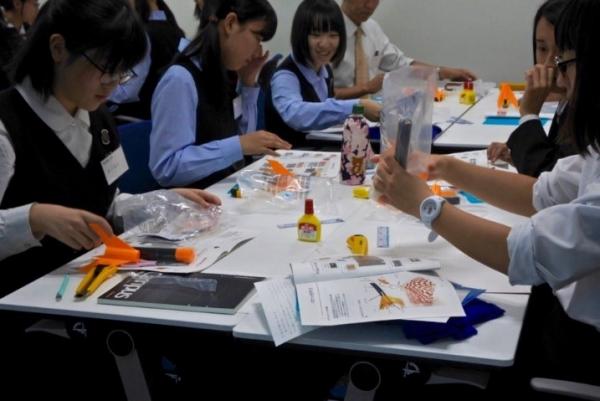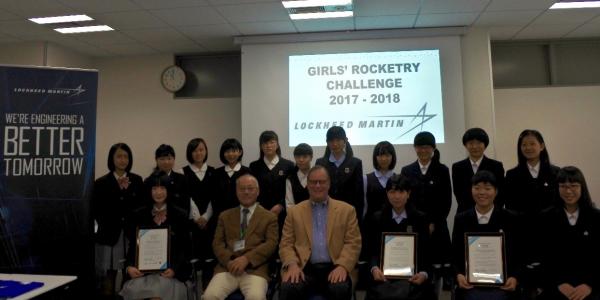Releases
TOKYO, Japan, October 16, 2017 – Lockheed Martin has launched the second cycle of its ‘Girls’ Rocketry Challenge’ program, a Science, Technology, Engineering and Mathematics (STEM) initiative designed to enable female high school students in Japan engage in real-life experiments that will further pique their curiosity and potential interest in STEM and related careers.
In partnership with the Japan Association of Rocketry (JAR), a non-profit organisation that sets the industry standard for model rocketry in Japan, the Girls’ Rocketry Challenge seeks to reinforce the basics of physics, mathematics, and other disciplines in a fun and collaborative manner using model rockets. The first cycle saw three schools from the Kanto region of Japan participate in the challenge and enter the national competition of model rocketry at the Japan Aerospace Exploration Agency (JAXA) Space Center in Tsukuba.
The second cycle of the program will enable 15 girls from three schools, all from outside of the Greater Tokyo Area, to obtain their class-4 rocketry licenses, practice model rocketry skills, and present their progress at Science Castle, a schools’ science fair, in December 2017. Participants will then join the national competition of model rocketry in May 2018.
On October 15, all three teams and their teachers joined Chuck Jones, Lockheed Martin Japan’s Chief Executive, and Makoto Yamada, JAR’s President, for an introduction to the program and to each other. On the same day, they attained their class-4 rocketry licenses through their first lecture on model rocketry, a hands-on model rocket development session, and finally, the first test launch of their original model rockets.
“Model rocketry enables students to experience the full scientific process of design, production, testing and improvement, all in a short amount of time. This experience empowers students not only with foundational STEM skills, but also the confidence to tackle complicated challenges and collaborate to solve problems with peers, which is integral to any career. Continuous effort is incredibly important in developing technical skills; therefore, we hope that the students from the first cycle carry on working toward their goals. With the support of Lockheed Martin, we look forward to developing model rocket and science education further,” Mr. Yamada said.
The Girls’ Rocketry Challenge is part of a larger Lockheed Martin commitment to STEM programs. In 2016 the corporation contributed more than $24 million internationally to support education initiatives with a strong emphasis on STEM education. The Girls’ Rocketry Challenge is also Lockheed Martin’s first STEM education program in Japan, following the success of other STEM education initiatives in the United States as well as in India and Singapore.
“When we launched the GRC in 2016, we wondered what kind of impact it would have. This year, we received three times as many applications as we did the previous year. Particularly impressive was the number of schools outside the Greater Tokyo Area who applied. This is a satisfying result and we are encouraged by the response,” said Chuck Jones, Chief Executive of Lockheed Martin Japan. He added that “we are delighted to continue working with our partner, the Japan Association of Rocketry, to encourage young people, particularly female students, to explore STEM education and potentially careers in STEM.”
Advancing STEM education is a critical focus for Lockheed Martin and a challenge that it shares with the Japanese industry. Lockheed Martin hopes that continuing this program will enable girls to experience STEM activities first-hand and that it will open new doors for the next generation of female innovators, explorers, and inventors.



